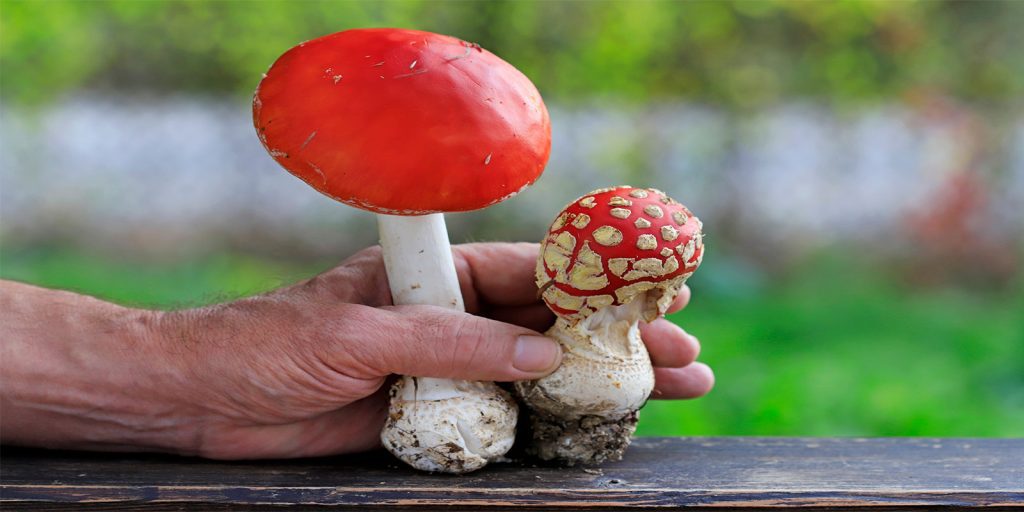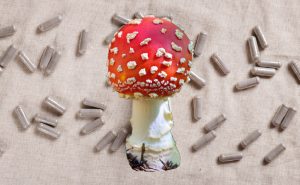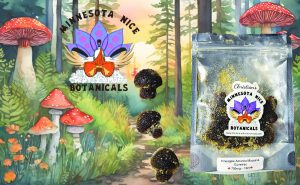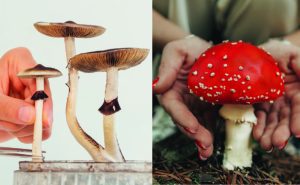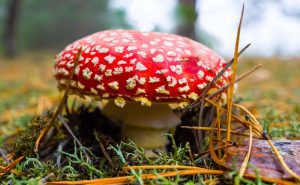Amanita muscaria mushrooms are one of the world’s most remarkable and well-known mushroom species. They have been revered since ancient times, not only because of their exquisite beauty but also for their psychedelic properties. With a vibrant red cap and white spots on its surface, Amanita muscaria is definitely an attention-grabber that can be used as a recreational mushroom. If you’re looking for ways to grow this magnificent mushroom in your own backyard, in this grow guide, we take you step-by-step through everything you need to know on how to successfully cultivate Amanita muscaria mushrooms so that you can reap their many benefits these mushrooms can offer safely and responsibly. Continue reading our guide on growing Amanita muscaria mushrooms in 2023!
What are Amanita muscaria mushrooms?
Amanita muscaria, commonly known as the fly agaric or fly Amanita, is a mushroom found widely throughout the Northern Hemisphere. It is one of the world’s most recognizable and iconic mushrooms, with a bright red cap dotted with white spots. The mushroom is widely used for recreational, religious and therapeutic purposes.
Amanita muscaria can be found in many different types of habitats. It prefers cool, moist forests and is common in coniferous or birch woods of northern areas. The mushroom usually fruits during the late summer or fall months, most often near spruce, fir, or pine trees. In some areas, it can even be found in grassy fields or meadows. The mushroom has also been found in urban areas, often growing from the roots of trees planted near buildings.
To read an in depth article on the the amanita Muscaria mushroom please read our article titled, What are Amanita Muscaria Mushrooms?
How to grow Amanita muscaria mushrooms
Amanita muscaria mushrooms can be planted in the garden or in containers. It is important to ensure that your chosen location has moist soil and partial shade. You should also ensure enough space between each mushroom since they will spread out once fully grown. We suggest buying your Amanita muscaria growing supplies from our trusted supplier North Spore out of Portland Maine. North Spore was was launched in 2014 by a mycologist, an organic farmer, and a photojournalist — three college friends brought together through their shared love of the mycological world. What began as a simple love for mushroom foraging and cultivation quickly developed into an obsession with all things fungi. From there, an urban mushroom farm was born, as was the desire to spread the spore to the masses.
Following are the steps for planting the Amanita muscaria mushroom:
1. Gather the spores:
Start by gathering some of the spores from an already existing Amanita muscaria mushroom patch. Collect them in a sealed container and label it clearly with the date, location, and species of mushroom you have collected.
2. Prepare a medium to grow the mushrooms:
To start growing your own Amanita muscaria mushrooms, you’ll need to prepare a medium where they can grow. A common method is to mix equal parts vermiculite and peat moss. If desired, add some organic compost or manure for additional nutrition.
3. Plant the spores near pine, oak, spruce, fir, birch, cedar, or similar conifer trees:
Using a spoon or other utensil, sprinkle the spores evenly over the prepared surface. Remember to label your area with the date and type of mushroom you’re planting.
4. Place in a cool, darker place:
Amanita muscaria mushrooms prefer cool temperatures and humid environments, so find a location that gets plenty of indirect sunlight and is not too hot or cold. It’s very important the the mushrooms are planted near pine, oak, spruce, fir, birch, cedar, or similar conifer trees. The Amanita muscaria mushroom works in conjunction and has a symbiotic relationships with the tree roots to grow properly.
5. Keep the soil moist:
Amanita muscaria mushrooms need plenty of moisture to grow, so it’s important to keep the soil moist but not wet. If you notice that the soil is drying out too quickly, consider adding some additional moisture.
6. Wait for them to grow:
It can take 2 years for Amanita muscaria mushrooms to grow to maturity, so be patient and don’t give up too soon! Fruiting occurs in summer and autumn across most of North America, but later in autumn and early winter on the pacific coast. Make sure you plant plenty of spores each season to insure a large harvest.
7. Harvest the mushrooms:
When the mushrooms are ready to pick, use a sharp knife or scissors to avoid damaging the mushrooms. Be sure to immediately store any harvested mushrooms in a sealed container, as they will not be kept for long.
Once you have harvested your Amanita muscaria mushrooms, you should thoroughly dry your mushrooms to “cracker” dry.
What kind of soil is best for growing Amanita muscaria mushrooms?
The best soil for growing Amanita muscaria mushrooms is well-drained, slightly acidic soil with a pH level of between 6.5 and 7.0. The ideal consistency should be moist but not waterlogged. Adding organic matter such as compost or peat moss to the soil can help ensure proper drainage and acidity. Additionally, adding some lime to the soil can help make it more alkaline, creating a better environment for these mushrooms. The best soil additives can be found at North Spore mushroom growing supply.
Finally, Amanita muscaria mushrooms thrive in environments where temperatures range from 50-60 degrees Fahrenheit (10-15 degrees Celsius). With the right soil and conditions, you should have an ideal growing environment for Amanita muscaria mushrooms. In addition to soil conditions, a few other things help ensure the successful growth of Amanita muscaria mushrooms.
These include adequate sunlight, air circulation, and protection from animals and birds. Additionally, the use of fungicides can also be beneficial in helping promote healthy mushroom growth.
What type of water should I use?
When growing Amanita muscaria mushrooms, it is important to use clean water. Rainwater or filtered tap water are good options for watering your mushroom patch. The pH of the water should also be taken into consideration, as Amanita muscaria prefers a neutral pH (around 7). If the water has too much acidity or alkalinity, it can affect the growth and development of the mushroom.
Additionally, it is important to ensure that chlorine has been removed from tap water, as this can be toxic for the fungus. Testing kits are available on the market if you are unsure about the water quality or pH. Finally, avoiding softened or demineralized water is recommended, as this could lead to a lack of necessary minerals for the mushroom’s growth.
In summary, when growing Amanita muscaria mushrooms, it is best to use clean rainwater or filtered tap water with a neutral pH (around 7).
Final words
With a little bit of care and attention, you can successfully grow Amanita muscaria mushrooms in your own backyard. By following the instructions in this guide, you will be well on your way to cultivating your very own crop of these beautiful fungi. Have you had success growing Amanita muscaria mushrooms? Drop us a line on social media and send us a picture of your harvest!
It’s important to be dressed in style when cultivating Amanita muscaria mushrooms, put out the best vibes to your beautiful budding Amanitas with Shroom Beach apparel! The best part? SAVE 205 your entire order by using our discount code “amanitainfo” at checkout. Check out all this fantastic shroom gear!
Nate
Nate is a longtime contributor to many cannabis, hemp and psychedelic related websites including Amanita Info. His passions include small business, the psychedelic industry and its positive role in mental health. When he isn't writing he enjoys working out and watching the history channel.


